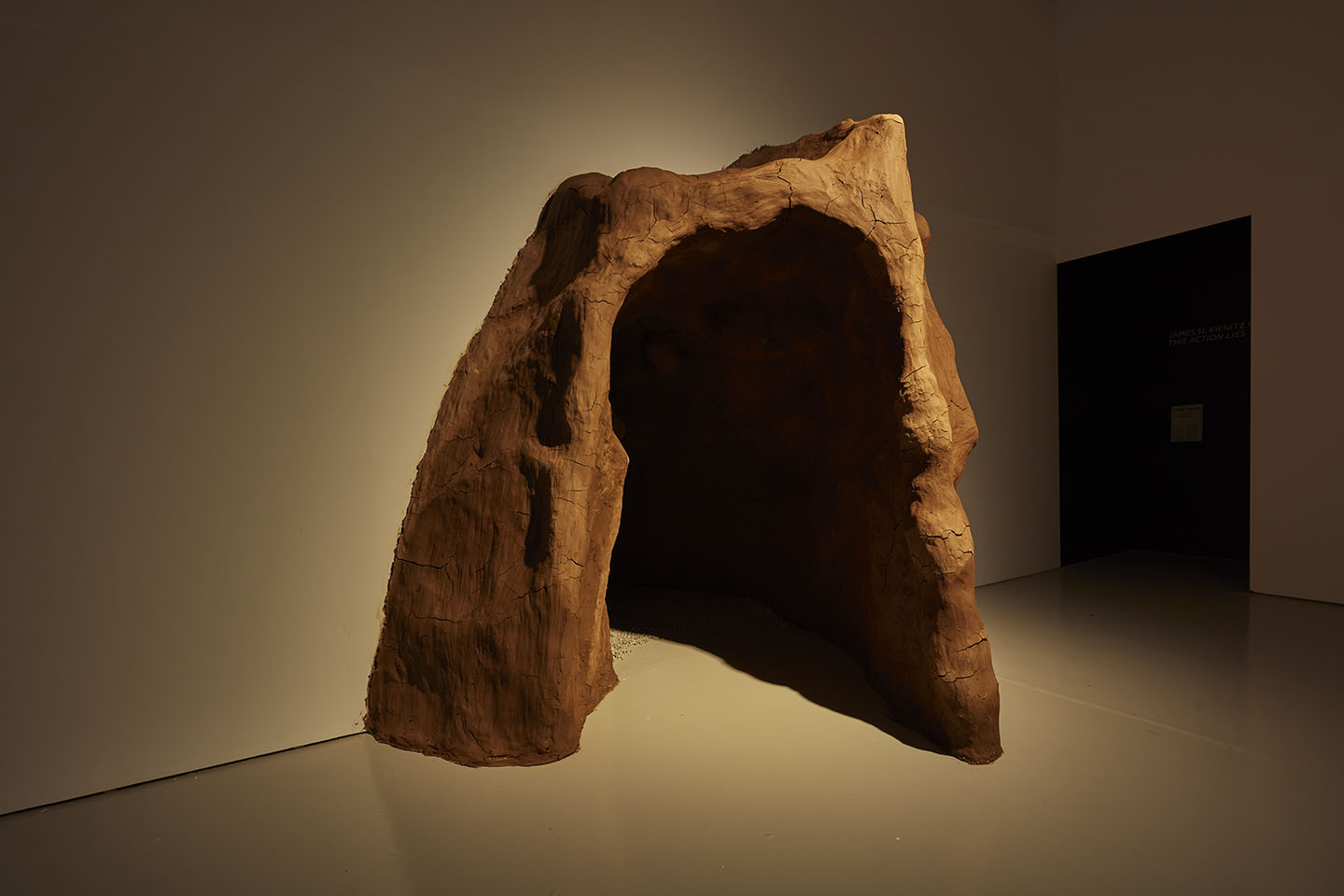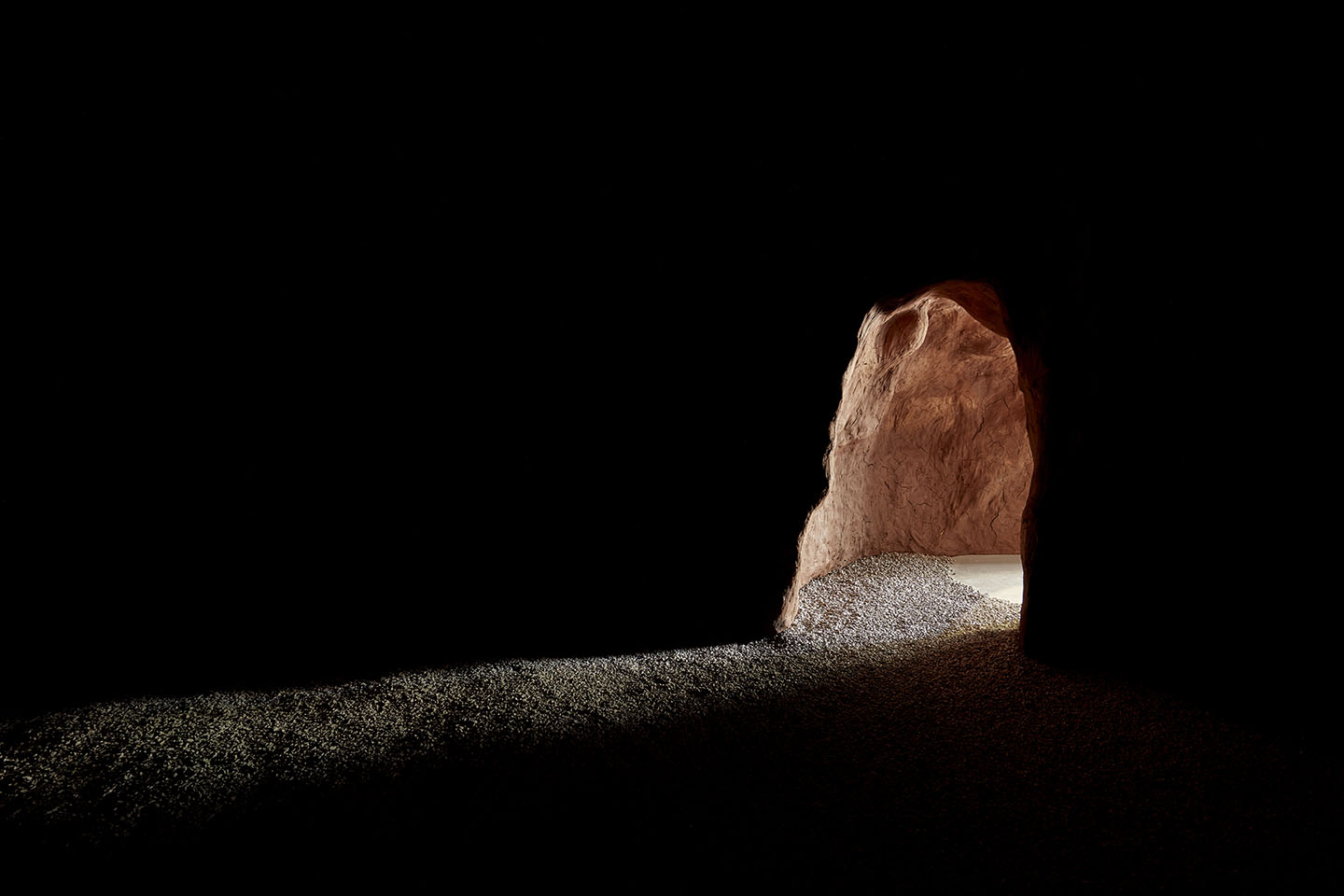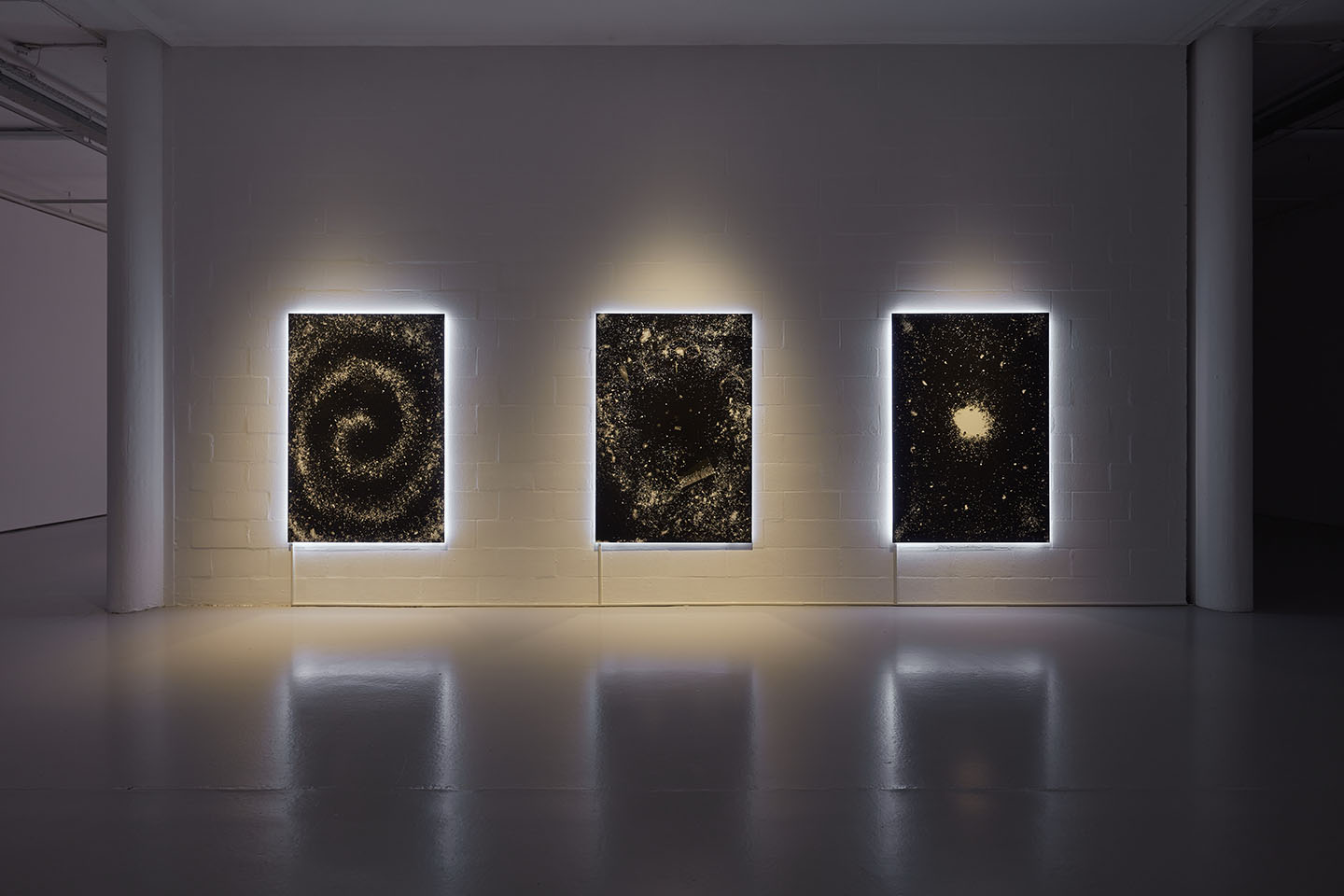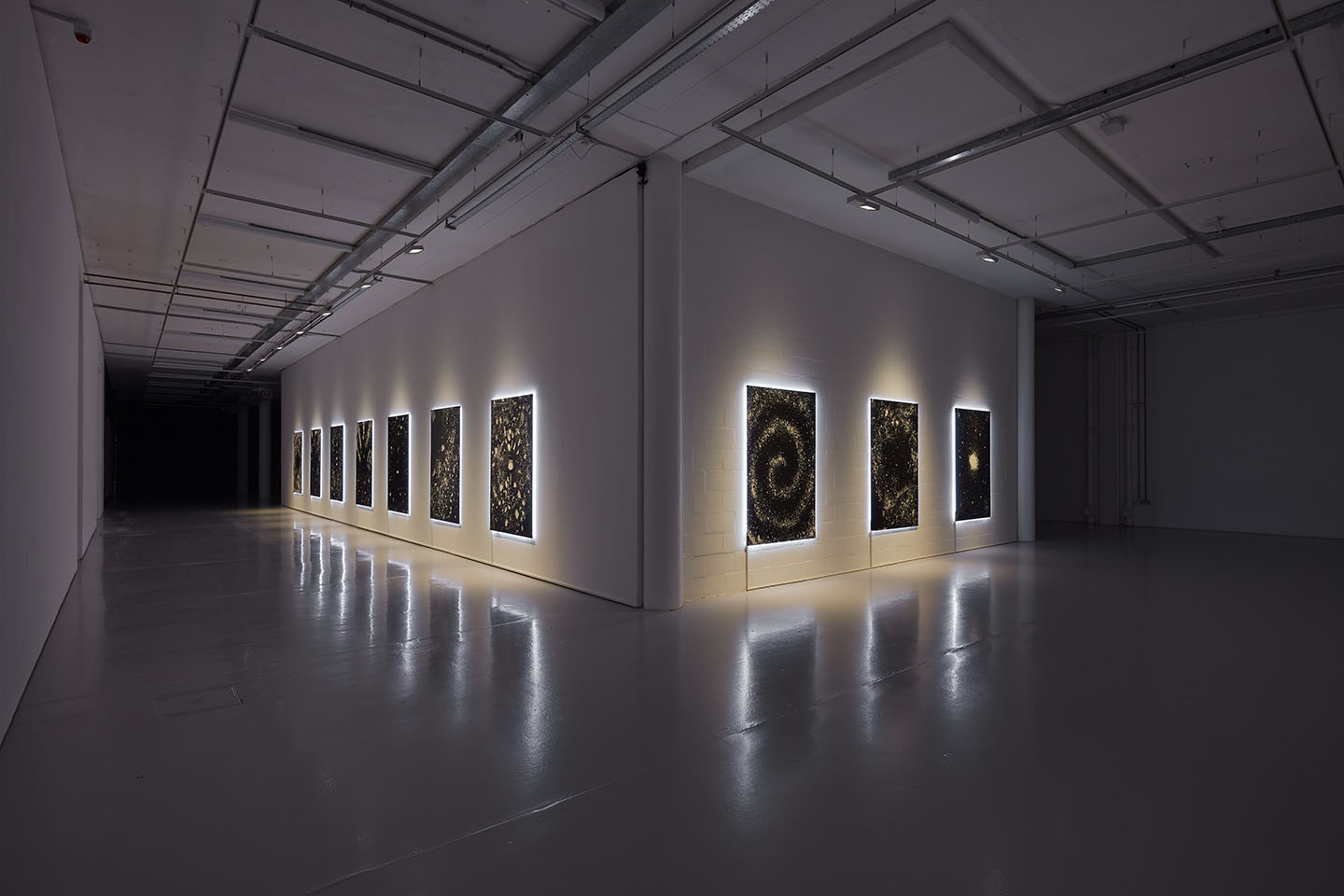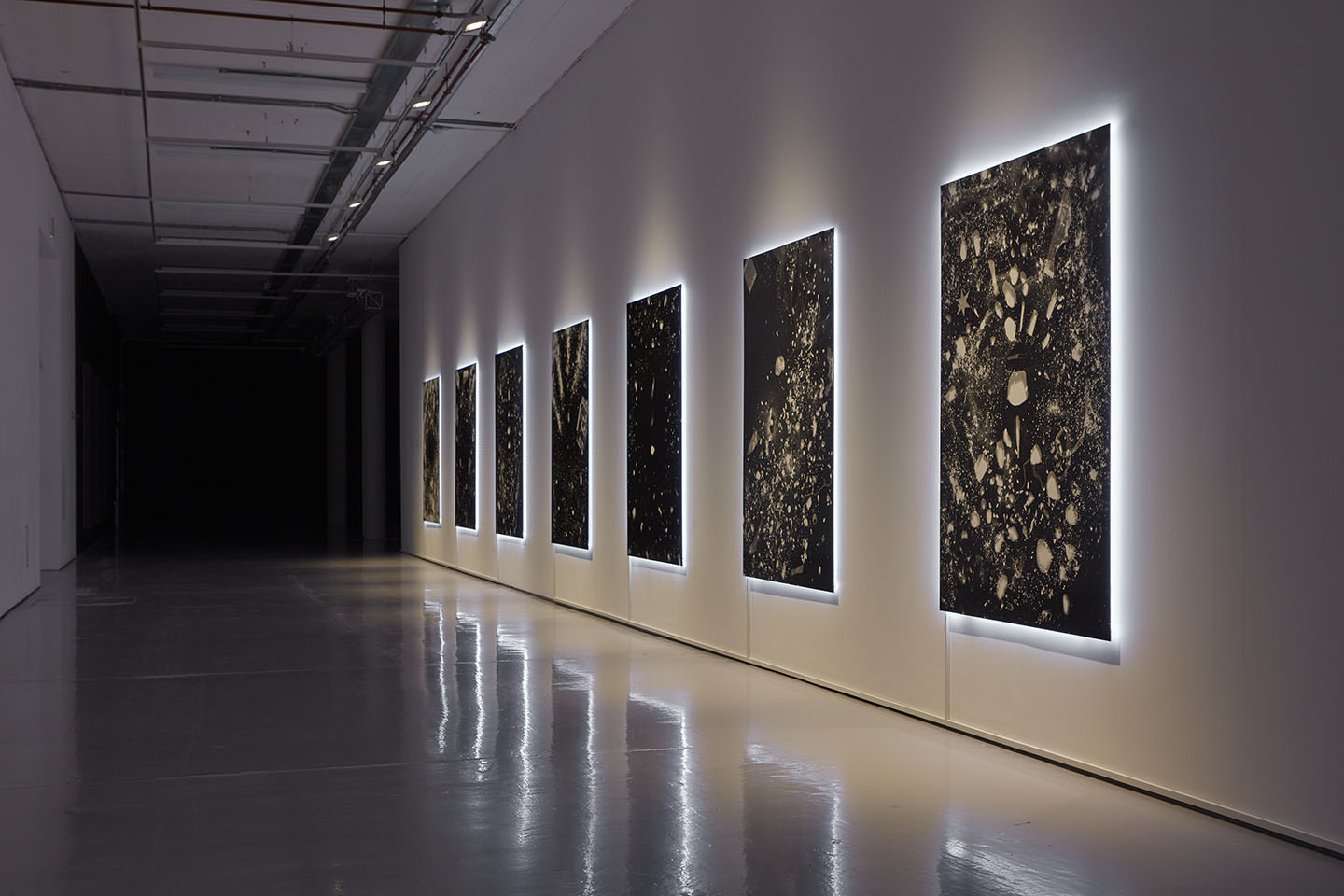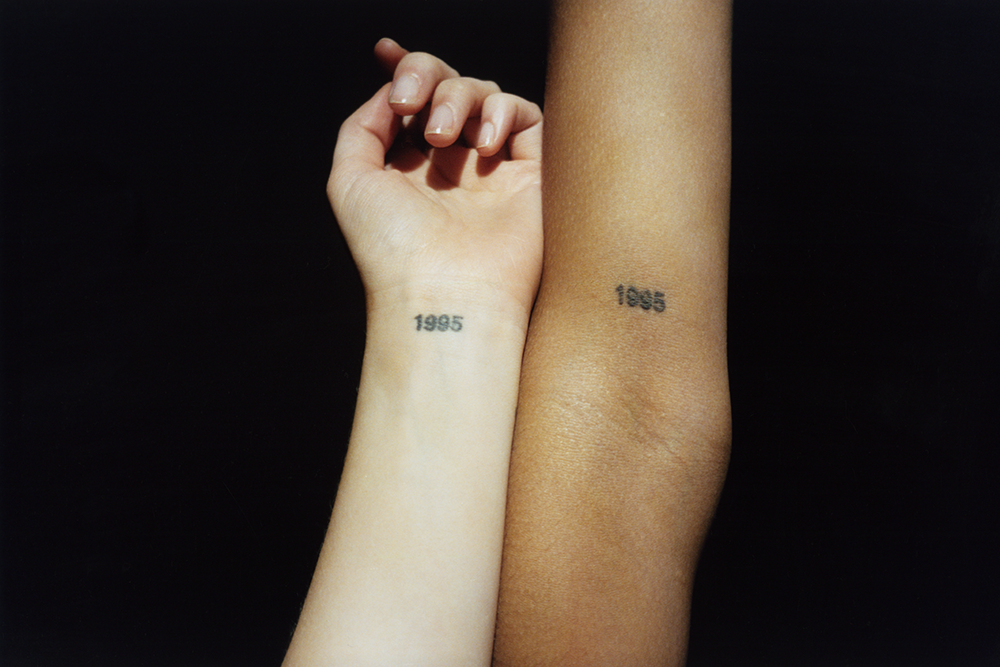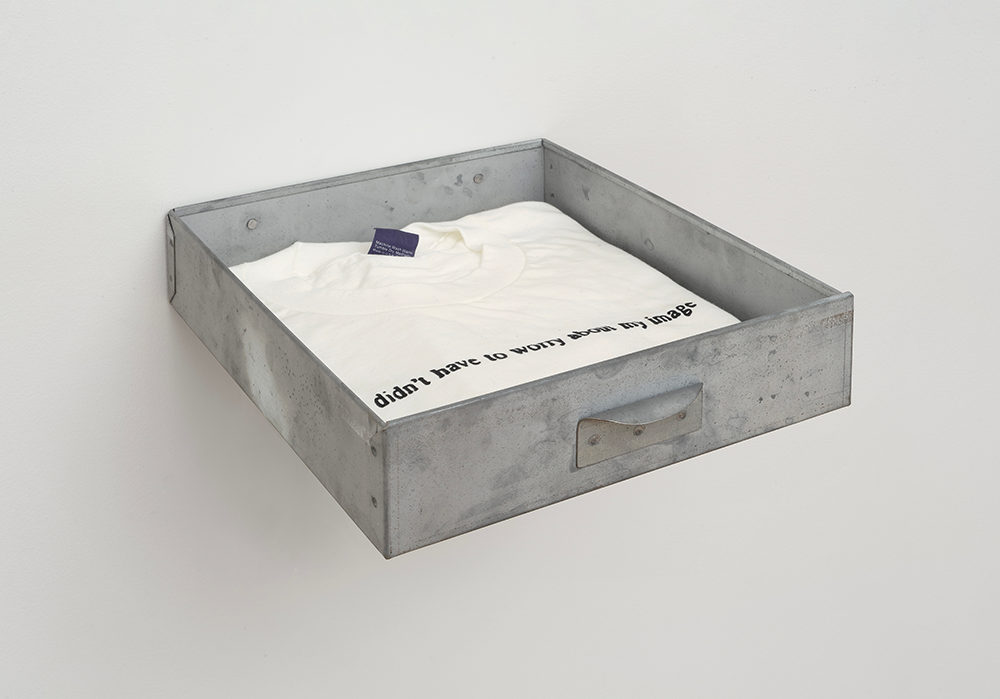To access Libita Clayton’s immersive sound installation Quantum Ghost (2019), one must enter the space through a cave mouth leading into a small tunnel. This sculptural façade is fabricated from cob, an organic mix of clay, sand, and straw that has been used for building since the prehistoric era. In England, cob buildings are notably found in the West Country region, where Spike Island is located, and where Clayton lives and works.
As part of her residency at Gasworks, London, in 2018 (where this exhibition was initially presented), Clayton collected field recordings from tin mines and iron ore heaps in Penwith, Cornwall, and the pink salt lakes and uranium mines near Walvis Bay in Namibia, Southwest Africa, drawing parallels between the violence of colonialism and extraction. Both regions are also bound up with Clayton’s family history; the artist has similarly mined her own heritage and personal archive as a way to trace the connections between ancestry, diasporic migration, and geology.
Once through mouth of the cave, the spectator is enveloped in darkness. Gravel crunches underfoot as the limits of the capacious subterranean space are revealed under soft red lights. Loudspeakers affixed to three wooden beams play back a looped, twenty-one-minute audio work: “It’s beautiful, the most beautiful dark shadow. Velvety, strong. It clenches me,” murmurs one of the vibrating speakers. Narrative is interweaved with ambient noise, rumbling bass, rhythmic gaps, and extended silences — providing space for the unheard, the ghosts, the haunted echoes of this buried landscape to be absorbed.
In the outlying galleries — with white walls, aluminum frames, and cold blue strip lighting; a stark contrast to the cave — ten large-scale photograms are on display: Quantum Ghost Series 1–10 (2019). Their idiosyncratic details slowly unfold when viewed together. Here, minerals and research clippings from public archives (notably from the Archives of Anti-Colonial Resistance and Liberation Struggle in the National Archives of Namibia) have been placed directly onto photosensitive paper. Within this distorted celestial collage, the actions of the past, present, and future all meet, bear witness to one another.


